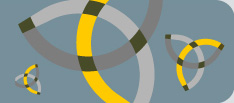Repetitive Strain Injury - Ouch!We visit Swindon Chiropractic Clinic to find out how you can avoid RSI
Repetitive Strain Injury (or RSI) is a condition caused by performing a repetitive task over a prolonged period of time, and is very common in office workers, especially those who spend long spells in front of a computer.
Office ergonomics are often a very significant factor in RSI.
In the video below James Forrester-Wood of the Swindon Chiropractic Clinic provides advice on how to set up your office space and work environments in order to help to reduce the risk of developing RSI, as well as other advice on how to avoid getting it.
What is a Repetitive Strain Injury (RSI)?
RSIs are typically injuries of the musculoskeletal and neurological systems that can be caused by:
- Doing an activity for a long time without rest or on a regular basis - Doing an activity that involves force, such as lifting heavy objects
- Poor posture or activities that require you to work in an awkward position
- Cold temperatures
- Vibrating equipment
- Stress
RSI is also known as cumulative trauma disorders, repetitive stress injuries, repetitive motion injuries or disorders, musculoskeletal disorders, and occupational overuse syndromes.
There are two types of RSIs:
Type 1 RSI - This is when we can diagnose a recognised medical condition from the patients symptoms. These conditions include: - Bursitis; Inflammation and swelling of the fluid-filled sac near the joint of the knee, elbow, shoulder or hip.
- Carpal tunnel syndrome; Pressure on the median nerve as it passes through the wrist.
- Tendonitis; Inflammation of the tendon.
- Tendonosis; Trauma to the tendon.
Type 2 RSI - This is when we cannot diagnosis a particular related medical condition from the patients symptoms. However, the history and presentation of the condition will lead us to a diagnosis of type 2 RSI.
Common Types of RSI:
Rotator Cuff Impingement Rotator Cuff Impingement Pain from the rotator cuff is the most common cause of shoulder pain. The rotator cuff is a group of four muscles which work as a unit to help stabilize the shoulder joint on movement. The tendons of these muscles run in a small space between the top of the humerus (arm bone) and the acromion (tip of the shoulder) known as the subacromial space. If this gap is reduced in size then the tendons will be repeatedly irritated on arm movements resulting in damage and inflammation and thus a gradual build up of pain.
One of the most common causes of impingement is an imbalance within the muscles surrounding the shoulder joint, which may lead to poor posture and faulty movement patterns, but it is also common in the overhead athletes such as throwers and swimmers.
It can also develop after the onset rotator cuff tendonitis as this condition involves inflammation of the tendon and thus a decrease in the subacromial space.
The symptoms of rotator cuff impingement include pain on the outside of the shoulder or moving the arm out to the side (abduction) and on overhead activities and the pain maybe more noticeable at night especially when lying on the effected shoulder.
Tennis Elbow
Tennis Elbow (lateral epicondylitis) is a condition that results in pain and tenderness over the outside of your elbow. It is usually seen in those over 40 and it affects 5 in every 1000 adults each year.
Tennis elbow is caused by the repetitive use of the wrist and finger extensors which results in the inflammation of the tendon. This is an occupational hazard for those whose work demands the prolonged use of their hands.
Symptoms of tennis elbow include tenderness over the outside of the elbow, pain on lifting or bending the arm, and on gripping or carrying and wrist weakness. This condition can also affect the inside of the elbow, this is known as medial epicondylitis or golfers elbow.
Iliotibial Band Syndrome
Iliotibial Band Syndrome (ITBS) results in pain over the outside aspect of your knee which is often aggravated by running. The iliotibial band is a long connective tissue which runs down the outside of your leg and extends from your hip to just below your knee joint and its main function is to aid the stability of the knee joint alongside other thigh muscles.
This syndrome occurs when there is repetitive irritation to this band as it travels over the bony prominence over the outside of your knee joint as you bend and straighten your knee.
It is more commonly seen in runners and some of the causes associated with ITBS include a significant increase in training intensity, training on hills or uneven ground, leg length discrepancy, faulty biomechanics and incorrect or worn shoes.
The symptoms of ITBS are an ache usually after running for roughly the same time or distance on each run over the outside aspect of the knee which may disappear soon after the training session.
Plantar Fasciitis
Plantar Fasciitis is a common condition which causes pain under your heel. Around 1 in 10 people will suffer with plantar fasciitis at some time in their life and it is especially prevalent in those between 40 and 60 years of age and is twice as common in women as it is in men.
The plantar fascia is a strong ligament like band which extends from your heel to the underside of the bones in the middle of your foot, and its main functions are to act as a spring when transferring weight through different phases of gait (walking).
Symptoms associated with plantar fasciitis include; pain in the front or centre of the heel bone, pain that is worse when first rising in the morning (called “first-step pain”), when first standing up after any long period of sitting, or after increased levels of activity especially in non-supportive shoes.
Causes of plantar fasciitis include; being overweight, taking up a new form of exercise, or suddenly increasing the level of exercise. Being up on your feet for several hours in the day, having flattened or high arches in the feet, or have uneven leg lengths.
Can Chiropractic help treat RSI?
There are many things that we can use to help treat RSI, the elements of which will be determined by both your history and examination findings and be determined by the latest research and years of clinical experience.
Treatment of RSI focuses on a couple of different aspects. First of all we need to increase the mobility of the surrounding structures. This will help to reduce the strain through the affected region. This is typically done by chiropractic manipulation and/or mobilisation. We also focus on reducing the muscular tension across the joint, and any fibrous adhesions (knots).
We use a number of techniques for this including deep soft tissue work, cross friction massage, myofascial release techniques and medical acupuncture.
Most importantly we will give you postural and ergonomic advice, and a home rehabilitative program to help address any imbalances and possible contributing factors and thus in turn reduce the likelihood of recurrence.
If you feel that you may have RSI, or symptoms similar to what has been described, call us today for a consultation.
For more information & advice, please visit the Swindon Chiropractic Clinic website via the link below. |
|
||||||||
|
||||||||
|
||||||||
|
||||||||
|
||||||||
|
||||||||
| Swindon Chiropractic Clinic - website | ||||||||
|
|||||||||









